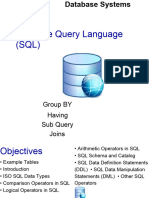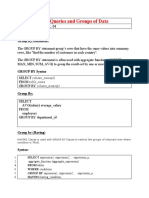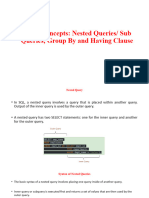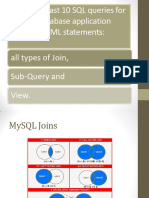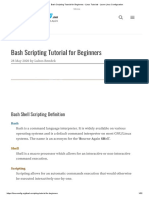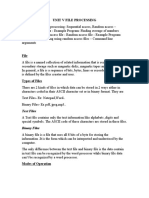0% found this document useful (0 votes)
13 views35 pagesComplex SQL Queries
The document provides an overview of complex SQL queries, including the use of GROUP BY, HAVING, and various SQL set operations such as UNION, INTERSECT, and EXCEPT. It also covers join operations, including inner, outer, and natural joins, as well as the creation and manipulation of views and nested subqueries. Additionally, it discusses set membership and comparisons, along with cardinality tests in SQL queries.
Uploaded by
aids10329Copyright
© © All Rights Reserved
We take content rights seriously. If you suspect this is your content, claim it here.
Available Formats
Download as PPTX, PDF, TXT or read online on Scribd
0% found this document useful (0 votes)
13 views35 pagesComplex SQL Queries
The document provides an overview of complex SQL queries, including the use of GROUP BY, HAVING, and various SQL set operations such as UNION, INTERSECT, and EXCEPT. It also covers join operations, including inner, outer, and natural joins, as well as the creation and manipulation of views and nested subqueries. Additionally, it discusses set membership and comparisons, along with cardinality tests in SQL queries.
Uploaded by
aids10329Copyright
© © All Rights Reserved
We take content rights seriously. If you suspect this is your content, claim it here.
Available Formats
Download as PPTX, PDF, TXT or read online on Scribd
/ 35








